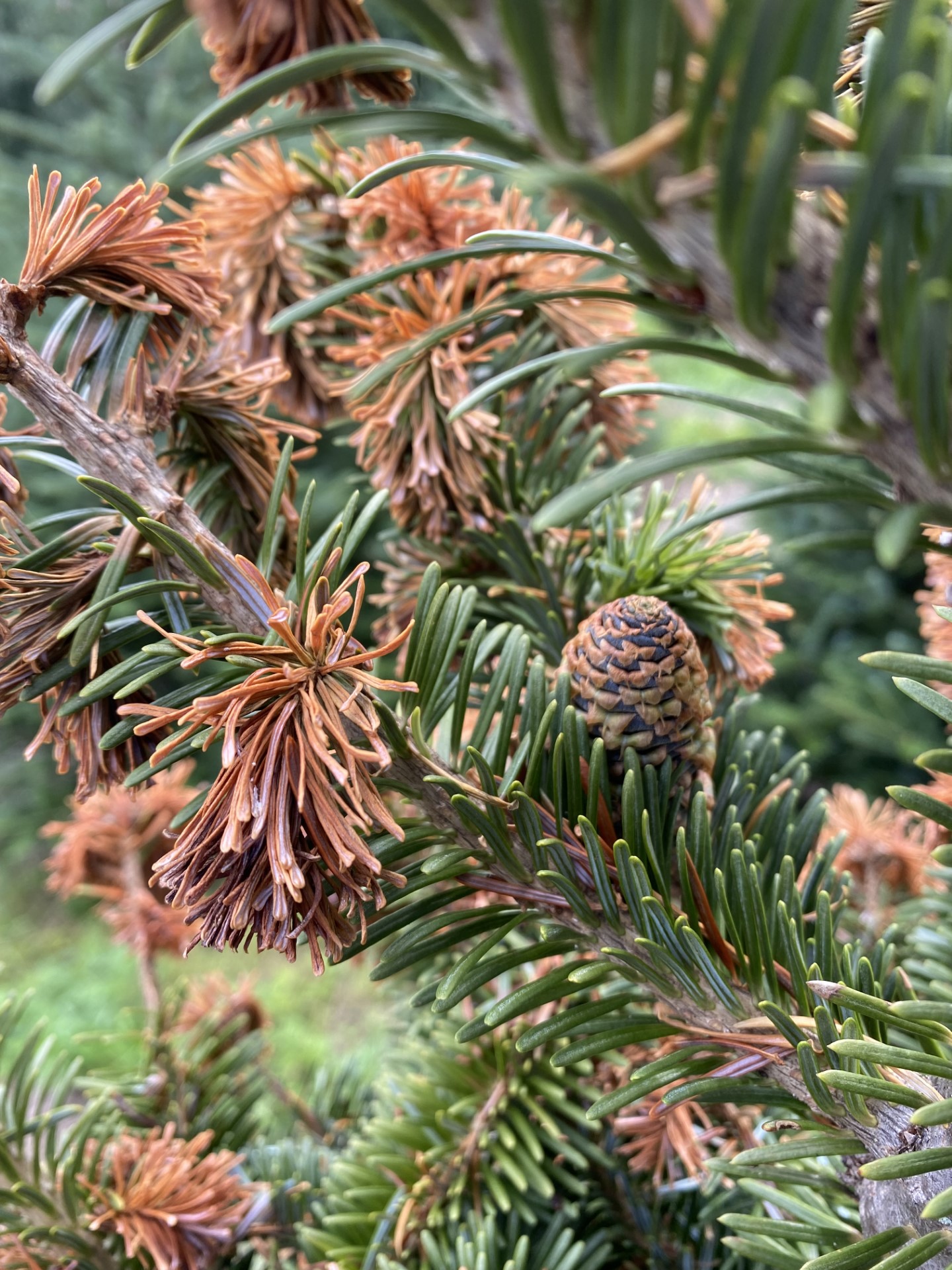
Winter Reading
We are continuing to develop better pesticide regimes for conifer and Christmas tree pests and diseases. Please review these resources in the interim.
Insects
- Posts related to conifer specific scale insects and their cultural and chemical management
- Spruce spider mites – “Miticide treatments should be concentrated during active periods from March through June & September through November. There are a couple dozen or more miticides labeled for use against spruce spider mites. Some of the reduced-risk miticides available include acequinocyl, bifenazate, Spinosad, & spiromesifen” – click here to continue reading “Spruce spider mites: a key cool season mite pest” (Steven K. Rettke – RCE)
- Nantucket Pine Tip Moth – “For small populations, prune out the dying tips and destroy. If large populations are anticipated, then hang out the pheromone traps to monitor for the adult flight period. Adult NPTM’s are ¼ inch long, with gray wings mottled with rust-colored patches. When the first moth is caught, count 10 to 14 days, and apply acephate (Orthene), cyfluthrin (Tempo2), or fluvalinate (Mavrik). Imidacloprid (Merit) is effective when proper lead-time is provided (4 to 8 weeks with soil injections or drenches). Merit is usually not effective against caterpillars (i.e., therefore, the NPTM is an exception to the rule). Be prepared for a second generation in July” – click here to continue reading “Some early spring inset pests on Christmas trees” (Steven K. Rettke – RCE)
Diseases
Needle cast diseases (adapted from Modified from Dr. Anne Gould’s post – “Needles may fall”
- About: The infection period for needle cast fungal diseases occurs in the spring. These diseases affect new needles and will cause them to turn brown and fall off later in the season or in subsequent years. “There are at least 40 needle cast diseases in the United States; most affect pine, spruce, fir, larch, cedar, hemlock, and Douglas-fir. These diseases are caused by fungi that have only one infection period per year; in most cases (but not all), the new growth is infected by the offending fungus and, once the infection cycle is complete, is eventually cast from the tree (hence the name)”. “A week or two before bud-break, orange fruiting bodies develop within these spots on the lower needle surface. When the fruiting structures are mature, they rupture and release abundant spores (called ascospores) during wet weather. These spores infect newly expanding needles. “Once the needles fully elongate and the weather is warm and dry, ascospores are no longer released, and the needles infected the previous year are cast from the tree. Symptoms on the newly infected needles do not appear until the following fall or winter, and spores are not produced again until the following spring.” (Dr. Anne Gould).
- Douglas fir is susceptible to Rhabdocline and Swiss needle cast. Spruce trees, especially Colorado blue spruce, are extremely susceptible to Rhizosphaera needle cast problems.
- Cultural management:
- Use healthy stock and provide an optimal growing environment.
- Inspect trees during late winter/early spring and look for symptoms and signs. The pattern of infection will likely follow portions of the canopy or field where moisture in the canopy is most abundant.
- Remove sources of inoculum. For best results, remove old and severely infected (30% or more) trees prior to budbreak. Prune severely affected branches during dry weather, and disinfest tools between cuts with rubbing alcohol.
- Manage the moisture. Choose sites with good air drainage and promote rapid drying of needles through spacing and row orientation. In existing plantations, remove weeds and consider mulching. Avoid overhead irrigation if at all possible.
- Material considerations:
- For many needlecast diseases, begin chlorothalonil sprays when the first 10% of the trees in the planting first break bud (or the candles are about ½-inch long). Repeat the sprays twice more at 7- to 14-day intervals until needles are fully elongated or until conditions are no longer favorable for disease development. Add an additional spray to control Swiss needlecast when the weather remains wet. For all fungicides, thorough coverage is essential. Unless your product includes a spreader sticker, add one to enhance coverage.
- Other compounds labeled for control of one or more of these needlecasts include azoxystrobin, coppers, (ammonium complex, basic sulfate, cuprous oxide, hydroxide, salts), mancozeb, thiophanate-methyl, and combination products. Read and understand each label prior to use to guard against known phytotoxicity issues.
Phytophthora, Pythium, Phytopythium
Please review this handout for material and cultural practice considerations – Click here– Oomycete considerations in the nursery (Phytophthora, Pythium, Phytopythium, Downy mildews)
- Compounds used to control Oomycetes (Phytophthora, Pythium, Phytopythium) are called Oomycides and are fundamentally different than those used for fungal and bacterial diseases. Therefor, proper identification is required, as a plant with a fungal root rot (ex: Annosum root rot) would require completely different materials. Contact the Rutgers Plant Diagnostic Lab for diagnostic services. Within available materials there are three main groups, which describe where they will work on the plant given the application technique. Cultural practices are always more important than materials, especially in this case.
For a copy of the 2024 NJCTGA Winter Meeting seminar – “Phytophthora Ins, Outs, Do’s and Don’ts” please send an email to twaller@njaes.rutgers.edu for a PDF copy.

